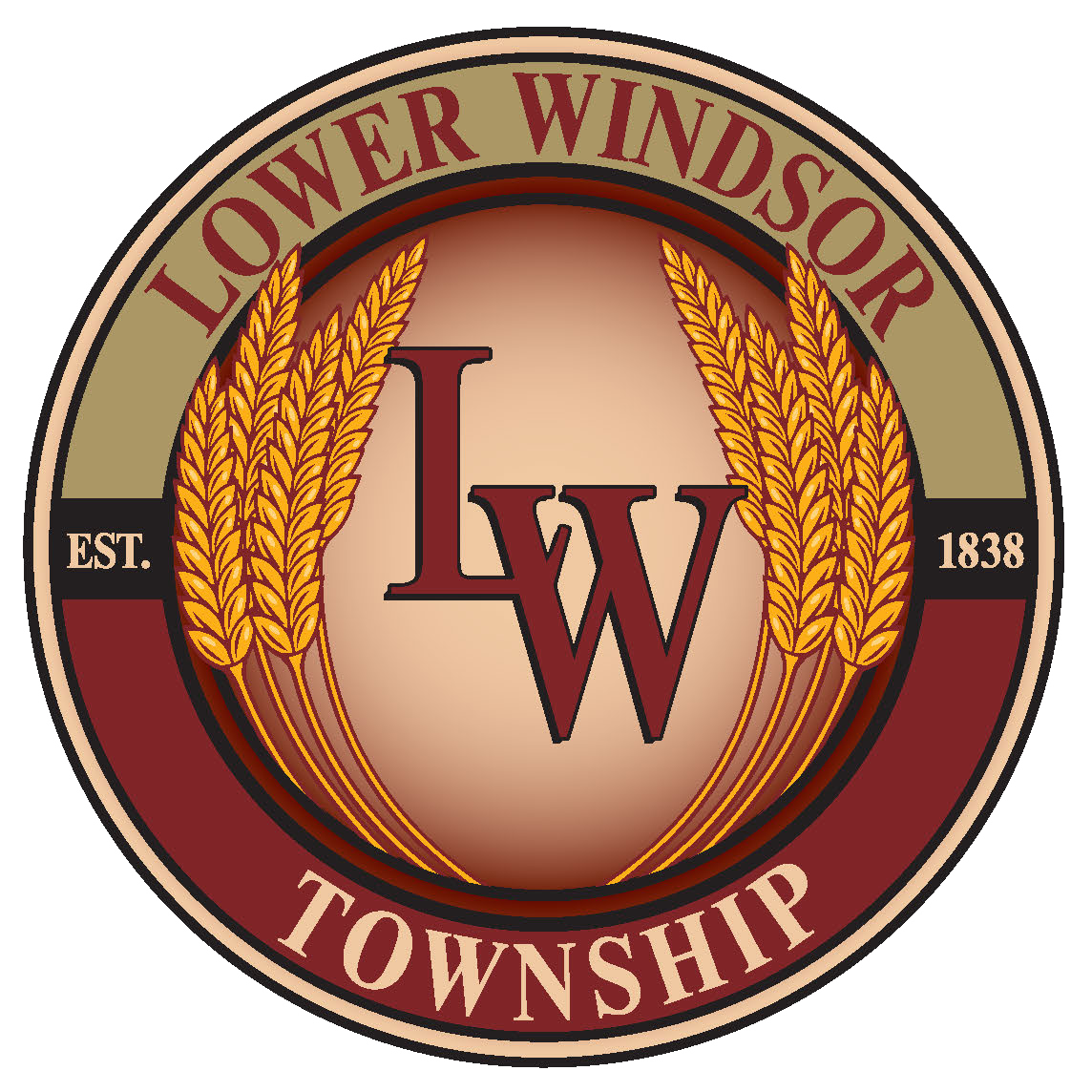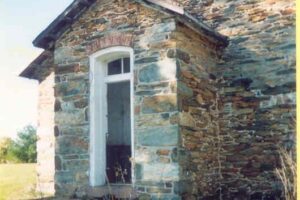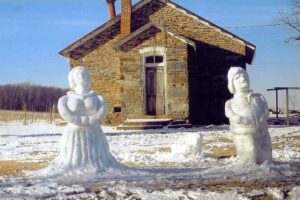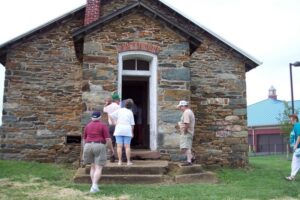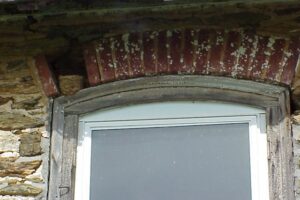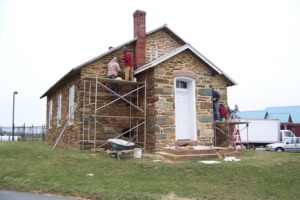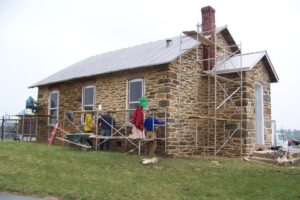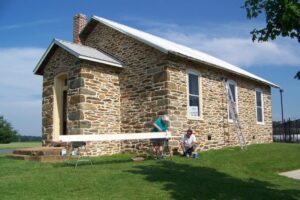Browse this list of histories written about Lower Windsor Township.
Cresap Fort The story of Captain Thomas Cresap
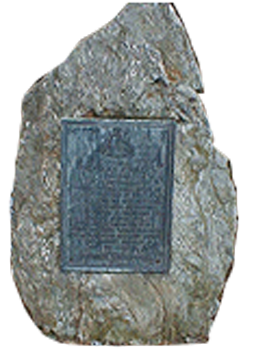
A Brief History of Schools in Lower Windsor Township By Hollis G. Bedell
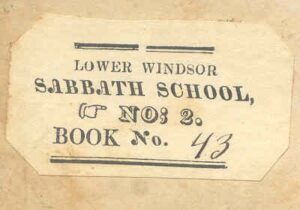
This label is in a reader published in 1832, and has two names written in the front – Samuel Rider and Mary G. (E.?) Abel and probably dates to after the formation of LWT in 1838.
When the Pennsylvania State Constitution was adopted in 1790, there was no provision made for public education and all educational institutions at that time were private and only available to those who could afford them. Starting in 1809, the State passed various provisions that would help provide schooling for those children between the ages of 5 and 12 whose parents were unable to educate them. This law was unpopular and was replaced by an even more unpopular law in 1824 which stated that each township or borough should oversee the education of the children in their district. This was soon replaced by the Act of 1834 which established our present system of public schools. This law mandated that each township raise taxes to pay for the schools. Not surprisingly, there was a lot of local opposition to this, many bitter controversies arose, and many townships did not establish public schools until after 1848.

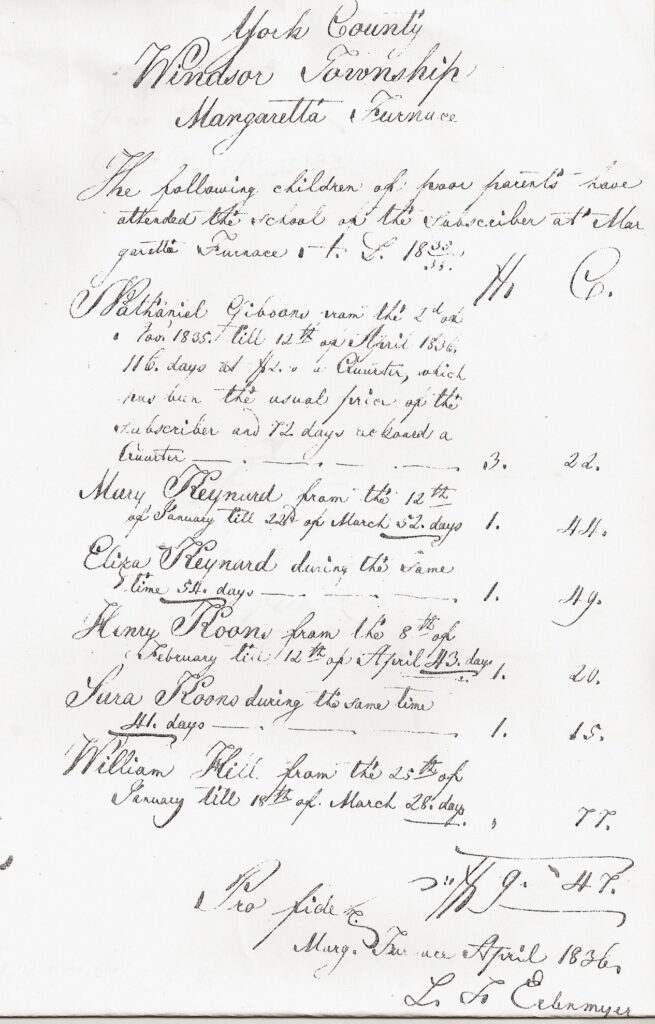
The first one-room schools in Lower Windsor township where built in the mid- 1850’s and by the start of the Civil War there were 7 one room schools in the township. (Benson’s, Furnace, Canadochly, Will’s, Neiman’s, Kline’s and Gilbert’s). All were stone except for Gilbert’s School (which was wood and burnt down in January 1948). The post Civil War boom experienced by the township saw the building of 6 more schools by 1876, (Pike’s Peak, Martinsville, Snyder’s, East Prospect, and the 2 two-room schoolhouses of Yorkana and Craley). Within the next 20 years the township would build 7 more one room schoolhouses (Long Level, Pleasant Hill, Snavely’s, Brenneman’s, Bittersville, Winter’s, and Schultz’s), so that at its peak there were 20 schoolhouses within the township, 18 one-room and the 2 two room schools. The York County School directory for 1935-36 lists 17 schools within the township and when the Eastern York School District was consolidated in 1954, 17 schools were still in use in the Fall of 1954 when the schools closed their doors forever. Starting in the January 1955 all students attended Canadochly.
The school in East Prospect burned in the great fire of 1900, Pike’s Peak school was abandoned after the great Bull Run flood of 1914, and Benson’s School was closed in the early 1920’s.
After consolidation, the school district sold the schoolhouses, and almost all are now private residences and many have been so greatly altered and added to that the original structure is obscured. The Snavely School, near the corners of Mt. Pisgah & Prospect Road, was demolished by Modern Landfill in 2004 (!). Kline’s School (at the bottom of Kline’s Run Rd) is abandoned and in a state of disrepair. Martinsville Schoolhouse is now owned by Lower Windsor Township and sits next to the municipal building on the Craley Rd. The school best preserved in the state that it was when they were abandoned in 1955 is the Wills School, on the East Prospect Rd just west of Delroy. It is owned and maintained by the Conservation Society of York County.
The one room schools in our area are very similar in design. Almost all are made of local stone and consist of one room with a small lobby – the cloakroom – at the front and with 6 large windows, often 3 to the east, 3 to the west; there are arched brick lintels above the windows. Most have a gabled entrance with a recessed door, with a transom window above the door. The Martinsville Schoolhouse is a good example of this typical architecture.
After school consolidation, the Martinsville school was bought by the Olewiler family, which owned the adjacent farm (the land upon which the LWT Municipal building now sits). They stripped the inside of all its furnishings (slate boards, cabinets, etc,) and used the building for various purposes over the years. Corn and straw were stored in there, wheat was thrashed, and for a period of time, goats were housed in the building. The windows were gradually lost, the door gone and it was open to the elements for decades. When the township bought the land in June 1986, the roof leaked, it had no doors or windows and there was a large mulberry tree growing out of a large crack between stoop and the front door.
The Township, with the help of the Lower Windsor Area Historical Society, has put much time and energy into preserving the building. The roof was patched, the exterior was repointed, all the exterior woodwork was scraped, repaired or replaced as necessary and repainted, temporary storm windows were added, a new door was hung and the missing transom windows rebuilt and installed. The interior was been cleaned, the ceiling has been patched, repaired and repainted and Historical Society volunteers are presently redoing the interior wood work and painting the interior. New double hung windows are being built and will be installed by the fall. The Historical Society has obtained slate boards (from another local one room school house) which will be refinished and installed in the Martinsville school.
The roof needs to be replaced, and electricity brought to the building.
- the schoolhouse soon after the township bought the property
- The schoolhouse in the 1970’s
- Alumni inspecting schoolhouse before renovations
- Bird’s nest above one of the window’s
- Repointing
- More repointing
- LWAHS volunteers painting and installing trim
